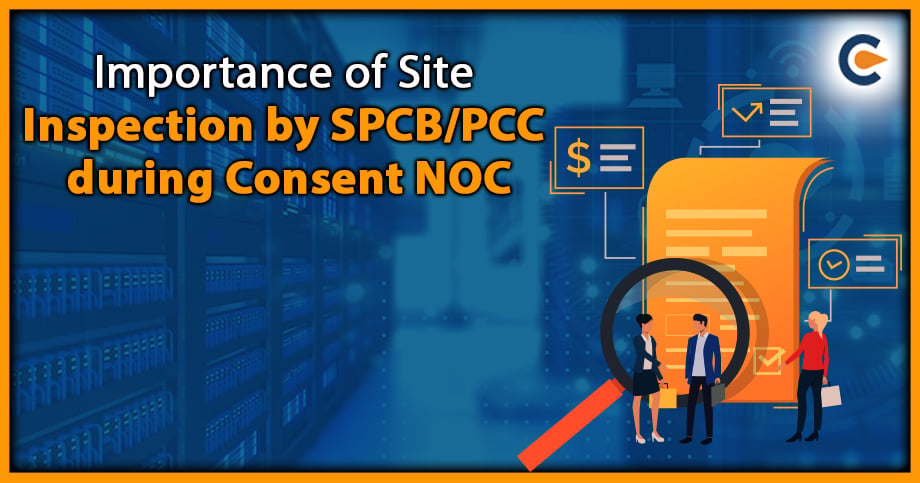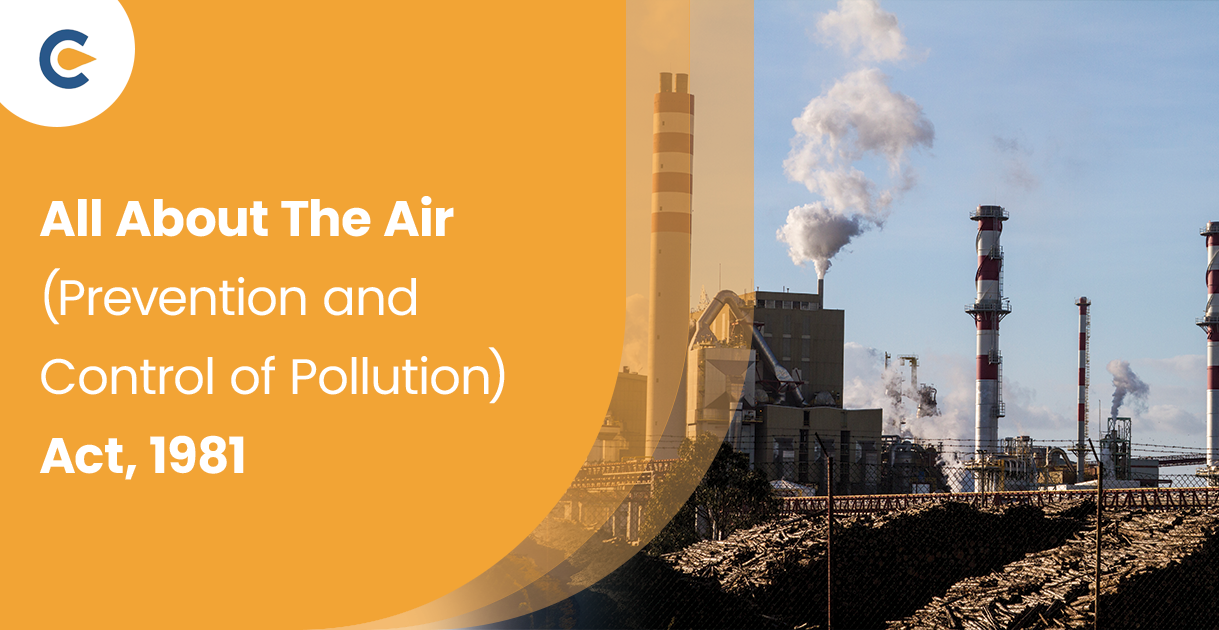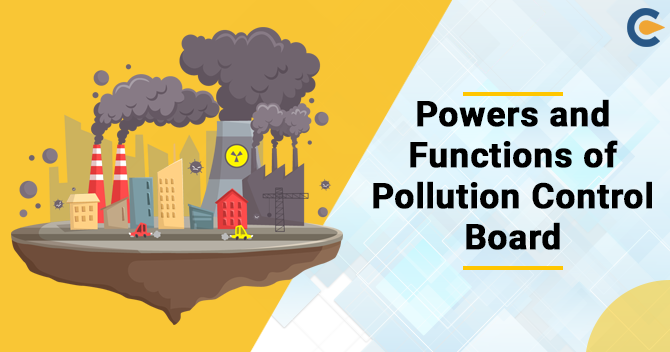State Pollution Boards (SPCBs) and Pollution Control Committees are responsible for implementing environmental legislation in the state, such as the Water Act, 1974, the Air Act, of 1981, the Water (Cess) Act 1977 and some of the provisions under Environmental (P) Act, 1986 and the rules framed there under like, Biomedical Waste Rules, 1998, Hazardous Waste Rules, 2000, MSW Rules, 2000, etc. The SPCBs regulate industries, industrial processes and businesses etc., through the mechanism of consent management. Consent is required to ensure adherence to pollution control norms. Site inspection by SPCB/PCC is conducted at two separate stages of business setup, i.e. before establishment (Consent to Establish) and before starting operation (Consent to Operate). While CTE is required only at the time of establishing a new unit or before carrying out expansion /modernization in the existing unit, CTO is granted for a specific period and needs to be renewed every time after expiry.
A system of categorization was introduced in June 2012 on the basis of size and resource consumption by an industrial unit. Industries were categorized as red, orange, green and white. However, in March 2016, the concept of the “Pollution Index” scale was introduced by CPCB[1]. The Site inspection by SPCB/PCC is crucial for projects or units in the first three categories, whereas units in the fourth category (white category) don’t require site inspection.
Conditions Where Site Inspection Will Be Done
- Prior to the issuance of CTE
- Prior to the Issuance of CTO
- Before renewal of CTO
- When a public complaint is filed against a unit
Note: The National Green Tribunal (NGT), after hearing a case of groundwater pollution in Haryana, gave a new direction on inspection policies in 2018. In December 2019, the Central Pollution Control Board (CPCB) directed the SPCBs to reset inspection frequencies for industries to once in 3 months for red category (or highly polluting industries) and once in two years for lesser-polluting industries. Before this, the frequency of Site inspection by SPCB/PCC was once in 3 years for polluting industries and around seven years for less-polluting industries.
Role and Responsibilities of SPCB/PCC
- To conduct programmes to control and abate water and air pollution in their respective state.
- To advise the State Government on preventing and ablating water and air pollution.
- To collect information relating to water and air pollution and disseminate it in the interest of pollution prevention.
- Inspect discharges from industrial units such as sewage, trade effluent, and industrial plants or manufacturing processes.
- To Issue an environmental no-objection certificate to start an industry
- To inspect air pollution control areas to assess the quality of air therein and to take steps for the control, prevention or abatement of air pollution in such areas.
- Regulate and control noise-producing and generating sources.
- Monitor the compliance of the standards regarding groundwater, ambient air, leachate quality, compost quality and incineration standards.
- Close down a defaulting industrial plant or withdraw its power or water supply.
- To lay down effluent standards for the trade effluents or sewage for the emission of air pollutants.
- To evolve the best economically viable technology for treatment for sewage and trade effluents.
- To collect samples of trade effluents, sewage and emissions of air pollutants and to analyze the same for specific parameters.
- To perform such other functions as may be prescribed by the State Government or Central Pollution Control Board.
But What Is Inspected During Site Inspection?
The role of Site inspection by SPCB/PCC is crucial at the time of CTO when the project proponent is ready to start operation. To inspect any unit or project, the time and date are conveyed to the applicant. The following factors are taken into account at the time of site inspection.
Step 1: At the inspection stage, the site inspector visually inspects the plant periphery from the outside first. The officer assesses the emission status from the stacks and fugitive emissions. He then continues to look on the effluent discharge channel for any abnormality in the flow and discharge.
Step 2: Next, after serving the notice of inspection to the occupant or the authorized personnel and after entering the plant, gets the acknowledgement of receipt of notices from the concerned person on the office copy.
Step 3: At the next stage of Site inspection by SPCB/PCC, the officer will then take stock of the operational status of various operations in the units which are potentially polluting and plan stack & AAQ monitoring activities to be conducted. The officer will then inspect the key process that has the potential for air pollution, fugitive emission or effluent generation, stormwater drainage network or solid waste generation.
Step 4: Next, the officer will verify the water management aspects, solid waste disposal site, e hazardous waste storage etc., to verify the water consumption figures and verify the compliance status of consent conditions.
Step 5: Next the officer will verify the status of the plantation programme and get acknowledgement from the representative on notices intended for sample collection for air/effluent samples that were collected. In the case of ETP, the officer will verify the log book on ETP operation, ascertain the operational status, and ask for any other document as deemed necessary to ascertain the functioning of ETP in the preceding period.
Step 6: After the completion of Site inspection by SPCB/PCC, a brief meeting is conduct with the senior level officials and management representative and apprise them of all major deficiencies/ lapses/ non-compliances observed during the inspection and suggest remedial measures and instruct them to take immediate corrective actions without waiting for communication/ direction from the Board and report the compliances.
Importance of Site Inspection by SPCB/PCC
The implemented mode of industrial categorization indicated by red, orange and green colour codes also defines the extent of inspection and testing the unit will be subjected to. The following sections deal with the importance of site inspection for an industrial project or business.
- While granting consent, SPCB has to check that the unit has installed all required pollution control measures as per the category in which they fall and the operation it will perform.
- The Site inspection by SPCB/PCC also ensures that any industrial facility doesn’t come up in a restricted/control area (e.g. air pollution control area) or in areas where specific business activities are prohibited. For instance, many businesses may perform unauthorized operations in the facility for which they are not authorized as part of their operation and produce harmful industrial discards that are not easy to dispose of.
- Therefore, the Boards demand the details of the manufacturing process and the list of products that will be manufactured at the time of CTE application. Before issuing CTE too, the Board has the authority to inspect the proposed site.
Site inspection by SPCB/PCC are thus considered a cross-check on pollution control by industry. SPCBs also integrate the stipulations for the abetment of water and air pollution in the case of Environment Clearance as a proactive measure. Therefore, industries try to control pollution to comply with norms and send reports to SPCBs and PCC periodically. Industries hire laboratories to monitor pollution and submit quarterly data to respective SPCBs or as per the agreed compliance conditions in the CTO. Some of these boards own XGN software systems through which the industries can report pollution level data on a monthly basis.
Conclusion
After issuing Pollution NOC, the SPCBs/PCC regularly monitor compliance by these industrial/project units/entities through periodic compliance reports. Under the Air Act and Water Act, SPCBs can obtain information, take samples, enter and inspect, punish polluters and restrain any non-complying entity through courts. Apart from Site inspection by SPCB/PCC, these Boards also have the power to give directions for stoppage/closure/disconnection of electricity etc. Therefore, a smooth site inspection must be ensured to obtain CTO swiftly and hassle-free. A unit may need the assistance of certified environment and licencing experts to deal with any hurdle during the Site inspection by SPCB/PCC and resolve queries faced in the process.
Also Read:
Consent For NOC From State Pollution Control Board











